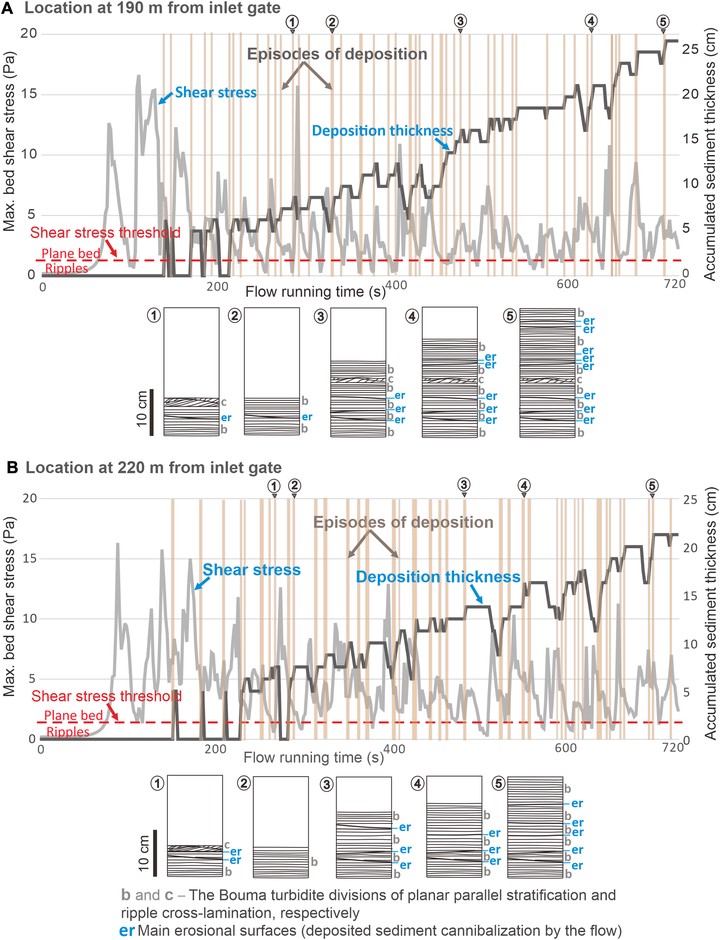 Overhead view of turbidity current flowing across relay ramp topography with associated deposition
Overhead view of turbidity current flowing across relay ramp topography with associated deposition摘要
The deposition of a classic turbidite by a surge-type turbidity current, as envisaged by conceptual models, is widely considered a discrete event of continuous sediment accumulation at a falling rate by the gradually waning density flow. Here, we demonstrate, on the basis of a high-resolution advanced numerical CFD (computational fluid dynamics) simulation and rock-record examples, that the depositional event in reality involves many brief episodes of nondeposition. The reason is inherent hydraulic fluctuations of turbidity current energy driven by interfacial Kelvin-Helmholtz waves. The experimental turbidity current, with realistic grain-size composition of a natural turbidite, used only 26 to 33% of its in-place flow time for deposition, while the remaining time went to the numerous episodes of sediment bypass and transient erosion. The general stratigraphic notion of a gross incompleteness of sedimentary record may then extend down to the deposition time scale of a single turbidite.